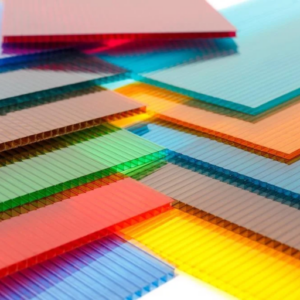The universe of plastics is dominated by these two materials, polycarbonate and polyethylene. These two types of plastic are different from each other in a number of ways including their properties which make them versatile enough for use in many applications that range from household objects to industrial parts. The objective of this blog post is to provide an exhaustive comparison between polycarbonate and polyethylene by looking at what makes them tick, where they excel as well as their drawbacks if any. This information should enable readers to decide wisely on the best suited plastic for their needs depending on the disparities illustrated here. Manufacturers or designers who want more knowledge about what goes into shaping our world with materials might find this article helpful because it highlights some key players in the plastic industry today.
What Are the Physical Properties of Polycarbonate and Polyethylene?
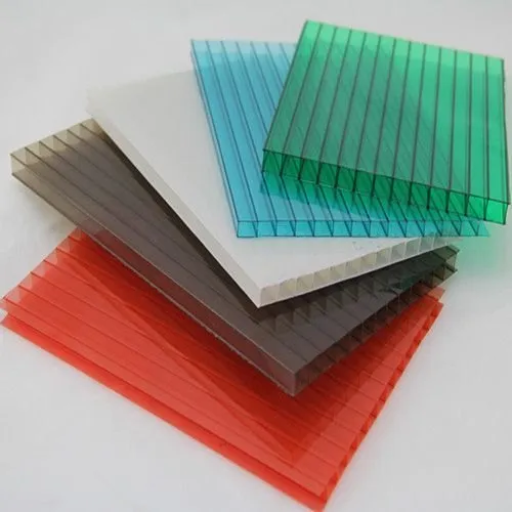
Image source: https://www.indiamart.com/
It is recognized that polycarbonate has a high impact resistance and transparency such that it almost cannot be broken or seen through, just like glass does. It possesses a high melting point which is about 288°C (550°F) and also boasts of great toughness and strength thus being hard wearing too; this makes it useful for items that require both hardness as well as resistance to breakage e.g., eyeglass lenses, bullet proof windows or CD/DVD discs.
Polyethylene is more elastic compared to polycarbonates; its melting point ranges between 115°C (239°F) – 135°C (275°F) depending on density. This material is less fragile than polycarbonate but weaker and less rigid too. Polyethylene has superior chemical inertness coupled with ease in processing hence widely used for making plastic bags among other things such as containers or pipes.
Each of these materials presents specific advantages suited for different applications either in industries or homes.
Durability and Impact Strength
Polyester is famous for its exceptional durability and high impact strength. It can be said to be indestructible and able to bear great physical stress such that it can be used in rough service like protective devices, car parts or electronic housing. Polycarbonate has a very high strength-weight ratio thus provides strong protection without being bulky.
Polyethylene on the other hand is not as strong or rigid but still offers a good level of durability and flexibility. High density Polyethene (HDPE) especially shows off impressive shock resistance which makes it useful in items requiring both firmness and elasticity for example toys, water or gas pipes as well as large containers while Low-density polythene(LDPE)has more flex life than impact toughness yet excellent where this feature is needed most like packaging films or plastic bags.
All the same each material serves its purpose best; polycarbonates are preferred when higher strengths/rigidities are required whereas polyethenes when chemical resistances/flexibilities should take precedence over anything else.
Light Transmission and Optical Clarity
Polycarbonate is highly appreciated for its amazing light transmission and optical clarity, so it is often used as a material for lenses in eyeglasses, covers of greenhouses or bullet-resistant windows. It allows up to 90% of light to pass through which is close to the transparency of glass but without being fragile like it. What’s more polycarbonate does not turn yellow or deteriorate under the impact of ultraviolet radiation and outdoor exposure which only improves its optical properties.
On the other hand, polyethylene has lower light transmission than polycarbonate especially when it comes to low-density polyethylene (LDPE) which lacks optical clarity altogether. Instead, LDPE diffuses light well hence its applications in agriculture films or some types of packaging materials where total transparency is not needed but flexibility and diffusion are desirable qualities. However, high-density polyethylene (HDPE) is generally opaque hence cannot provide high levels of optical clarity demanded by certain uses.
To sum it up, each material has its upsides – while excellent light transmission together with optical clarity are paramount for such applications as bullet-resistant windows or covers of greenhouses then there’s no better option than polycarbonate; on the contrary lower demands regarding these attributes can be satisfied with polyethylenes.
Tensile Strength and Thermoplastic Polymer Characteristics
When it comes to thermoplastic polymer characteristics, polycarbonate and polyethylene are very different. Typically, polycarbonate has a higher tensile strength that ranges between 55-75 MPa (megapascals) which makes it perfect for applications where durability and resistance to impact is required. The toughness of this material can be attributed to its aromatic backbone and the presence of carbonate groups that enable it tolerate heavy stress without breaking down even under extreme conditions.
On the other hand, polyethylene has wider range of tensile strengths depending on its density. Low-density polyethylene (LDPE) shows a tensile strength of 10-20 MPa hence more flexible thus less likely to break under low force making it ideal for applications that need flexibility. Conversely high density polyethylene (HDPE) has higher tensile strengths usually around 20-37 MPa thus used in stronger applications like piping and containers.
In terms of thermoplastic characteristics; being amorphous allows polycarbonates to be able to resist higher temperatures than most plastics having an excellent dimensional stability and heat resistance with a glass transition temperature close or equal to 150°C. This makes the material suitable for high performance applications where thermal resistance is needed most. Whereas semi crystalline polymers such as PE offer good chemical resistance and flexibility at lower temperatures but HDPE remains functional up to 120°C while LDPE performs well even in cold environments due its lower melting point which is about 115°celsius.
To sum up, because it possesses high tensile strength alongside thermal stability polycarbonate stands out as the best choice for use in demanding situations whereas varying levels of tensile strength coupled with outstanding chemical resistance renders polythene applicable across various fields.
How Do Polycarbonate and Polyethylene Differ in Applications and Uses?
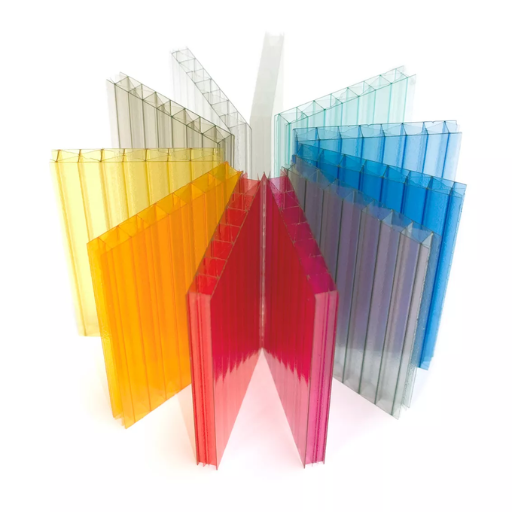
Polycarbonate and polyethylene have different uses and applications according to their properties.
The use of polycarbonate is seen in lenses for eyewear and bulletproof glass, because of its high resistance to impact coupled with optical clarity. It is also used in medical devices due to these features as well as others like good thermal stability and dimensional stability which ensure precision and reliability under high temperatures required by electrical components or electronic devices.
Polyethylene exhibits various densities that affect its flexibility and tensile strength. Low density polyethylene (LDPE) is commonly employed in packaging materials such as plastic bags or containers because it is more pliable but has lower tensile strength compared to high-density polyethylene(HDPE). The latter has higher chemical resistance besides having greater toughness which makes it suitable for piping systems, large storage containers among other heavy duty applications where great tensile strengths are needed while still maintaining good corrosion resistance against chemicals commonly found in laboratories or industries that handle aggressive substances through their processes.
In a nutshell, polycarbonates excel bests where there is need for clarity together with resistance against impact at elevated temperatures; on the flip side PE boasts versatility brought about by its different densities used for lightweight flexible wrappings alongside rugged chemically resistant products able to withstand harsh externalities
Greenhouse Applications and Roof Solutions
In the field of greenhouse applications and roofing solutions, each polycarbonate as well as polyethylene have their advantages thanks to some specific properties they possess.
Polycarbonate is considered to be the best option for roofs in greenhouses due to its impact strength and ability to protect against ultraviolet radiation. It provides good light transmission and blocks out harmful UV rays necessary for optimal plant growth. Strong enough to withstand severe weather conditions such as strong winds or hail, this makes it a reliable solution that can last long term.
Polyethylene on the other hand is commonly used as clear polyethylene film which serves as coverings for greenhouses. It is preferred because of its low cost and ease of use during installation. Being flexible means that one can easily drape it over frames so as to provide quick coverage for these structures thus saving time in comparison with other methods available. While not being able to offer such level of durability like polycarbonate does, affordable price together with good diffusion capabilities towards lights makes this material widely recognized among owners who would want set up seasonal or temporary greenhouses.
In summary, robustness and long life span are key factors when choosing roofing materials for a greenhouse where polycarbonates are ideal choices due their tough nature coupled with protecting abilities while considering different needs budgets too.
Utilize Polycarbonate for Many High-Stress Plastic Uses
Polycarbonate is a highly adaptable and long-lasting substance that can be used in many different high-strength plastic products. It is also known for being resistant to impacts, which is why it is often used when manufacturing bulletproof glass, safety goggles or riot shields. Moreover, polycarbonate’s transparency and resistance against ultraviolet radiation make it perfect as a material for eyeglasses lenses as well as automotive headlight covers. Furthermore, because of its thermal stability and ability to withstand high temperatures without deforming or melting under normal atmospheric pressure levels; this makes it suitable not only as an electrical insulator but also electronic component.
Common Uses of HDPE and LDPE
High-density polyethylene (HDPE) and low-density polyethylene (LDPE) both have versatile properties that are useful in many applications. HDPE is strong and tough so it’s commonly used for making bottles, pipes resistant to corrosion, geomembranes meant to protect against soil pollution caused by liquids such as chemicals or oil spills among others; plastic lumber too. Durable containers including containers for packaging heavy goods are also made from this type of polymer.
LDPE on the other hand has excellent flexibility hence preferred where ease during processing operations like extrusion blow molding into films sheets tubes etc., coupled with low tensile strength requirements are desired most often seen in grocery bags shrink wrap films various types of containers; besides being widely applied in electrical installations’ protective coverings such as laminations insulation materials around wires cables etcetera.
What Are the Environmental Considerations of Polycarbonate vs. Polyethylene?
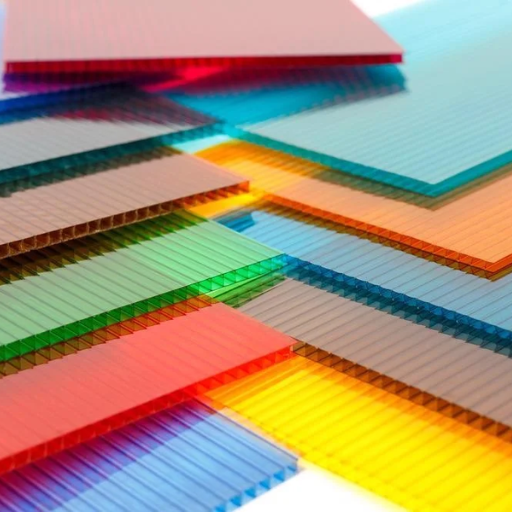
There are many things to think about when comparing the environmental effects of polycarbonate and polyethylene. Being extremely robust and adaptable, polycarbonate is nevertheless difficult to recycle. This requires specialized recycling facilities which most municipalities do not have therefore making its disposal at end-of-life more complicated. Another problem of polycarbonate is that it contains a chemical known as Bisphenol A (BPA) which has been associated with environmental problems as well as health risks.
Polyethylene – mainly HDPE and LDPE – has a better record in terms of recycling. HDPE can be reprocessed into various products thereby reducing overall waste produced while being widely accepted for curbside recycling programs. Although less easily recyclable than HDPE, LDPE still has higher recycling rates compared to polycarbonate but does not require BPA during its manufacture process like the latter does. Nonetheless, if managed improperly both forms of polyethylene may contribute significantly towards plastic pollution since they can break down into microplastics posing long term environmental threats. Generally speaking therefore; on average PE represents improved recyclability although PP also needs careful thought over life cycle assessments (LCAs) and environmental impacts (EIs).
Recyclable and Sustainable
There are some noticeable differences when you compare the recyclability and sustainability of polycarbonate against polyethylene. Polycarbonate can only be recycled in special facilities, because it is made with BPA which needs to be handled and disposed of carefully. On the other hand, polyethylene especially HDPE and LDPE are easily recyclable. This is because HDPE can be accepted widely into recycling programs where it can then be reused for different purposes thus making it ecofriendly. LDPE unlike polycarbonate does not use BPA during its production though less commonly recycled than HDPE still has an advantage over polycarbonate. However, if not well managed both forms of polyethylenes contribute towards plastic pollution that could break down into dangerous microplastics. Therefore although offering relatively good sustainability as well as recyclability, still require proper lifecycle management so as to minimize environmental impacts.
Differences in Recyclability and Sustainability
When it comes to recyclability and sustainability, there are a few key things to consider when comparing polycarbonate with polyethylene. The intricacy of its recycling process and the fact that it contains BPA, which is a potentially dangerous chemical, limits polycarbonate’s reusability. Polyethylene on the other hand can be easily recycled more often than not especially HDPE and LDPE. Household recycling programs frequently accept HDPE and it can be turned into many different items as well. However even though being better in terms of recyclability and sustainability in general, particularly HDPE, it still has environmental drawbacks since if not disposed properly may cause microplastic pollution. In essence both materials need careful management throughout their lifecycle so as to reduce any negative impacts they could have on our environment.
Why Choose Polycarbonate Over Polyethylene for Certain Applications?
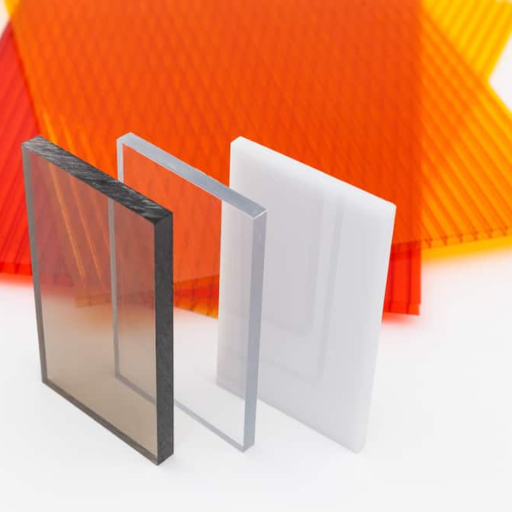
In some cases people choose to use polycarbonate rather than polyethylene because of its added strength, durabilityand clearness too. For example safety glasses or goggles lenses electronic device casings etc can all benefit from this material due to its toughness against impacts; however these features also make PC suitable for protective gear such as helmets or shields against flying objects while working in hazardous environments like construction sites etc where eye injuries are common accidents . Another thing worth mentioning is that apart from being resistant towards high temperatures unlike PEs like LDPEs or LLDPE (which melt at around 120°C), PC will not lose transparency even when exposed under prolonged sunlight which might necessitate using other plastics like acrylics instead so that they do not turn yellowish over time due to UV radiation damage caused by direct sunrays hitting them continuously without any shade protection . But still despite having concerns about recycle possibilities there are some good physical properties too which justify selecting PC for specific high performance applications.
Benefits of Enhanced Scratch Resistance
More durable resistance to scratches has many advantages, especially with the conservation of materials’ durability and appearance. The main benefit, according to leading authorities in this field, is that it makes things look good for longer because they stay clear and unmarked by ugly scrapes or blemishes. This is crucial for objects which come into frequent contact with people or are subjected to rough treatment such as electronic displays, spectacles lenses and vehicle parts among others. Furthermore enhanced scratch resistance also promotes usability; touch-sensitive gadgets will work well always while optical devices need not be replaced often due to their ineffectiveness caused by the same feature. In addition, this characteristic saves money on maintenance fees as well as frequent replacements hence making it economical for both buyers and manufacturers.
Durability for Greenhouse Applications
Polycarbonate is widely known for being tough when used in greenhouses since it combines strength with clarity in a unique way that no other material does so effectively. Polycarbonates can survive extreme weather conditions including heavy snowfall high wind speeds and hail storms without breaking apart or cracking under pressure. This means these structures can last long without getting damaged thus reducing expensive repairs needed over time taken before they finally collapse completely due to weariness from battling against elements alone all year round.
Also Polycarbonate blocks off dangerous ultra violet radiations but still allows maximum light penetration necessary for plants’ healthy growth at the same time. Additionally its lightweight property makes it easy during fixing unlike heavy materials which would require too much reinforcement thereby compromising on structural integrity altogether; however this does not mean that there should be no form of support whatsoever since this could lead into collapse eventually if neglected altogether but rather serve as an alternative method where necessary only so as not compromise safety further unnecessarily again anyway. Overall polycarbonates offer reliable solutions for constructing green houses because they are practical enough coupled up with better performance.
Superior UV Coating and Protection
Polycarbonate has a great UV-resistance and coating which makes it very effective in many applications especially when used outside. It comprises a special layer that is resistant to Ultra Violet rays hence protecting the underlying polycarbonate from the sun’s harmful radiation. Not only does this coating help extend life span of panels made from polycarbonate but also prevents yellowing, brittleness and loss in optical clarity. Consequently, even after being exposed under sunlight for long periods of time, PC remains strong and transparent hence finding its use in greenhouses, skylights or outdoor signs. As indicated before this material must have advanced UV protection so that things like sheets themselves can stay undamaged during prolonged exposure to different weather conditions thus giving them more strength and reliability needed for variety of uses outside.
What Are Some Alternative Materials to Polycarbonate and Polyethylene?
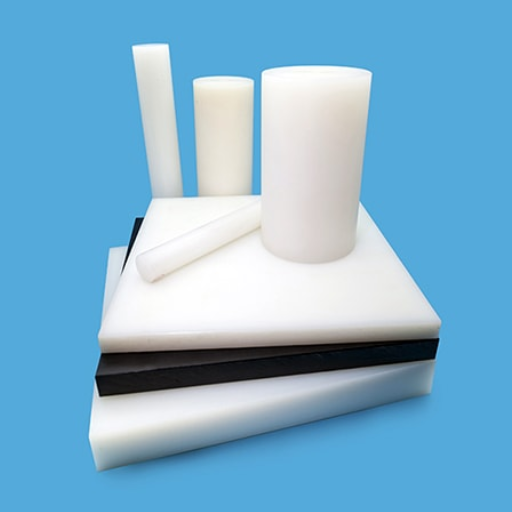
Other than polyethylene or polycarbonates; some alternatives are acrylics (plexiglass), glass fiber reinforced plastics commonly known as fiberglass (GRP) among others suchlike materials. Acrylic has got good transmittance level with respect to light and excellent resistance against Ultra Violet radiations making it perfect where optical transparency is required like windows or displays. Glass however heavy brittle provides highest possible clarity optically speaking plus durability making them suitable for architectural purposes at large especially those related with expensive types buildings including certain kinds construction green houses too can be used there. If you need something lighter yet stronger than steel itself then go for fibreglasses which possess both these qualities thereby becoming ideal choice whenever industrial application calls strength combined with corrosion resistance primarily into play. Every single one of these substances has its own unique set characteristics that could make any given situation favour one over another instead preference being given always towards either polyethylene nor polycarbonate based on specific needs alone.
Exploring PMMA and Acrylic Options
Poly(methyl methacrylate) or PMMA is often called acrylic. It is a type of plastic that can be used for many different things because it is see-through, blocks UV rays better than most plastics do, and can withstand bad weather. The best sources say that these features of PMMA make it a good substitute for polycarbonate when optical clarity and resistance to yellowing over time are important in a particular application. It’s light, hard to break, and can be shaped or cut easily to fit any purpose you have in mind for it. Additionally, there are various finishes available including clear or frosted ones depending on what somebody wants something to look like or how well they want its surface illuminated among other things too having many uses at once. Even though this material does not possess as much impact strength as polycarbonate does; however overall performance durability combined with clarity has made it one of the signboards’ favorite materials – especially those used outside under sunlight where people need protection from bright lights shining into their eyes while still being able see through them easily if necessary.
Comparison with PVC and Polypropylene
Polyvinyl chloride (PVC) and polypropylene (PP) are two commonly used plastics, with each having different advantages for different uses. PVC is known for its extraordinary durability and resistance to chemicals, which is why it is widely used in plumbing, electrical insulation and medical devices manufacturing. It also has both soft and rigid forms, hence it can be utilized in construction industries such as pipes building or even cable insulation among others things. But PVC is heavier than PP and tends to become brittle over time especially under sunlight exposure (UV radiation).
On the other hand, Polypropylene possesses high impact strength properties alongside low density values plus excellent chemical resistance thus making them useful for automotive parts production packaging materials textiles assembly etcetera . It also happens that this material exhibits better heat resistant ability than PVC does therefore enabling hot fill applications or microwave safe containers where necessary be achieved with ease. Being cheaper in cost together with lighter weight; makes polypropylene more preferable over many other alternatives when it comes into consumer goods sector as well as packaging applications generally.
Although being strong enough for infrastructure usage besides being versatile too; however lightness-flexibility-heat-resistant qualities possessed by PP make them suitable across various points pertaining consumers’ needs including but not limited to package design solutions establishments among others alike . Each of these materials has got its own set of characteristics that determine their appropriateness hence there should always be a match between project specificities vis-à-vis either using PVCs or PPs.
Frequently Asked Questions (FAQs)
Q: What are the main differences between Polycarbonate (PC) and Polyethylene (PE) as plastic materials?
A: Polycarbonate (PC) and Polyethylene (PE) differ significantly in terms of their properties and uses. Polycarbonate sheeting is known for its high impact resistance, optical clarity, and strength, making it suitable for applications like spectacle lenses, thin lenses, and commercial greenhouse construction. On the other hand, PE, specifically HDPE film materials, is valued for its low cost, flexibility, and ease of sorting for recycling, making it ideal for items like plastic sheeting and containers.
Q: How does Polycarbonate compare to Polyethylene in terms of light transmission to glass?
A: Polycarbonate (PC) offers superior light transmission to glass, which makes it a popular choice for applications requiring high optical clarity such as commercial greenhouses and light diffusers. Polyethylene (PE), particularly HDPE, has lower light transmission properties and is less suitable for applications needing maximum visibility.
Q: Is scratch resistance a consideration between these two materials?
A: Yes, scratch resistance is an important factor. Polycarbonate (PC) generally offers better scratch resistance than Polyethylene (PE). However, its scratch resistance is poor compared to glass, making it less suitable for applications where surface wear is a significant concern, although its impact resistance makes it advantageous for other uses.
Q: What makes HDPE an attractive option for cost-sensitive projects?
A: HDPE (High-Density Polyethylene) is known for its low cost, toughness, and ease of fabrication. It is also relatively easy to sort for high-grade recycling, making it a cost-effective choice for many applications, including plastic sheeting, piping, and container production.
Q: Why is Polycarbonate used in commercial greenhouse construction?
A: Polycarbonate (PC) is used for greenhouse construction because of its excellent light transmission, high impact resistance, and durability. These properties make it ideal for withstanding environmental wear while allowing maximum sunlight for plant growth. See our guide for more details on using PC for greenhouses.
Q: Can recycled materials be used in Polycarbonate and Polyethylene products?
A: Yes, both Polycarbonate and Polyethylene can incorporate recycled materials. Polyethylene, particularly HDPE, can include recycled material of near-top grade, making it an eco-friendly option. Polycarbonate can also be recycled, but less so for lenses due to the need for high optical quality.
Q: How do the fabrication processes differ between Polycarbonate and Polyethylene?
A: The fabrication of Polycarbonate often involves processes that ensure high optical clarity, such as injection molding and extrusion, making it suitable for applications like spectacle lenses and thinner lenses. Polyethylene fabrication is generally simpler and includes methods like blow molding and sheet metal fabrication, ideal for a wide range of products.
Q: What are the environmental considerations when choosing between Polycarbonate and Polyethylene?
A: When considering the environmental impact, Polyethylene (PE), specifically HDPE, is relatively easier to recycle and sort, making it more eco-friendly. Polycarbonate (PC), while also recyclable, is typically easier to process as virgin material and can have a higher environmental footprint in terms of energy used in production and recycling processes.
Q: Are there any specific applications where one material is preferred over the other?
A: Yes, there are several differences in preferred applications. Polycarbonate (PC) is ideal for high-impact and high-clarity needs like commercial greenhouses and spectacle lenses. Polyethylene (PE), particularly HDPE, is preferred for cost-effective and durable solutions such as plastic sheeting, piping, and containers where impact resistance and flexibility are key.

